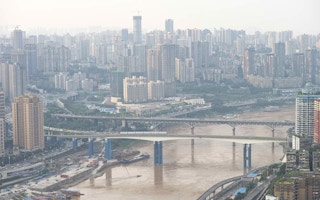Chinese central authorities on Sunday issued a document to set the basic principles, key tasks and targets for future urban development and management, aiming to make China’s sprawling cities more livable, efficient and green.
The document, from the Communist Party of China Central Committee and the State Council, came two months after leaders met for the Central Urban Work Conference, and was formulated to ensure that cities are “orderly constructed, properly developed, and efficiently operated.”
The last time China held a meeting like the Central Urban Work Conference was in 1978, when only 18 percent of the population lived in cities. The figure had increased to 56.1 per cent by the end of 2015.
Urbanization in the past few decades has brought about significant social and economic changes in China, spawning problems including traffic jams, pollution and compromised public safety.
Such urban ills have provoked public ire, putting pressure on city planners to find solutions.
Chen Zhenggao, minister of housing and urban-rural development, said Sunday’s document was drafted based on careful research by its ministry and 29 other related departments.
The guidelines said China will limit cities from growing beyond the means of their natural resources and environment.
Currently, Beijing, Shanghai and Chongqing municipalities all have populations exceeding 20 million. Cities like Tianjin, Guangzhou and Shenzhen each have more than 10 million.
Priority will be given to the protection of farmland, while land for construction use will be “properly allocated”. The country plans to take around five years to inspect and clear up illegal construction.
It also called for city planners to differentiate cities with urban landscape based on local characteristics.
Aside from the exterior of buildings, factors including resource and energy conservation as well as environmental protection should also be taken into account in the process of designing and constructing, the guidelines said.
As part of efforts to provide low-income urban residents with affordable housing, China aims to complete renovation of rundown urban areas and dilapidated housing by 2020.
China will also improve urban planning and construction of infrastructure, both underground and overground. Construction standards and project quality will be raised, the guidelines said.
To ease traffic jams in the cities, China looks to expand public transport network such as buses and railways. By 2020, China aims to raise the penetration of public transport to 40 per cent in megacities, 30 per cent in big cities and 20 per cent in medium- and small cities.
Efforts will be intensified to cut pollutant emission in the cities with increasing supply of clean fuel to improve energy structure, the document said.
It also called for developing smart cities through various Internet technologies, such as big data and cloud computing, aiming to upgrade urban management and services.










